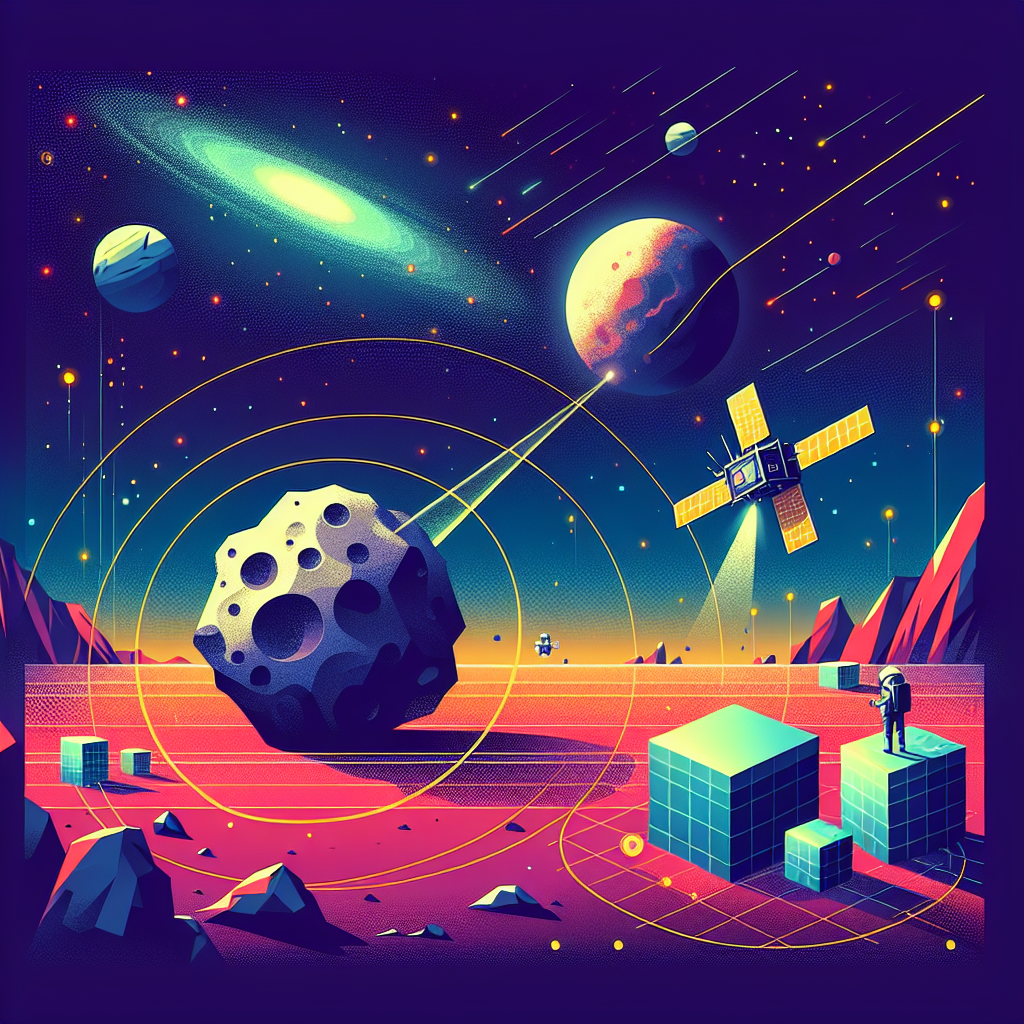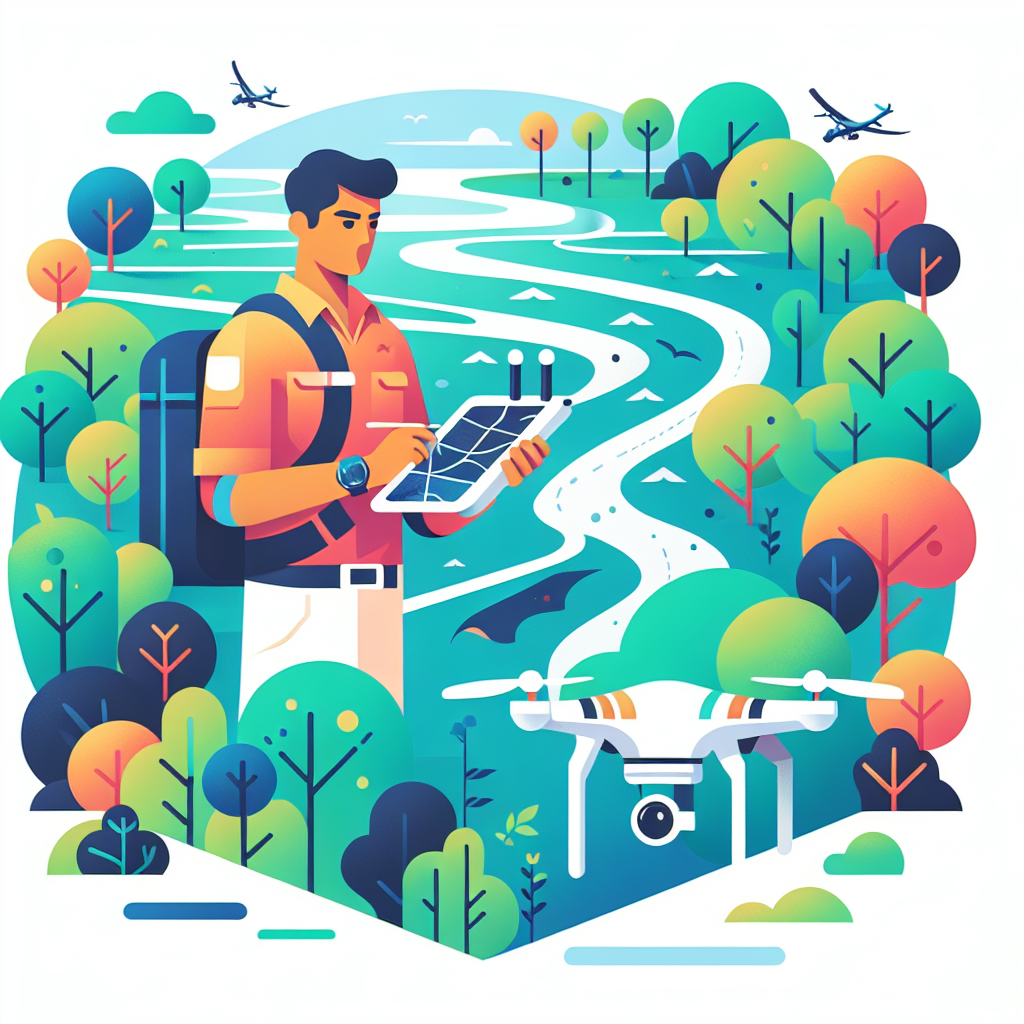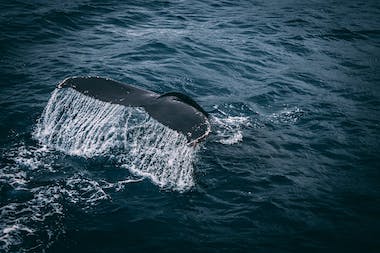The European Space Agency has launched a spacecraft called Hera to study an asteroid that Nasa intentionally moved off its path in 2022. The goal is to learn from Nasa’s collision with the asteroid Dimorphos and see if we can prevent dangerous asteroids from hitting Earth. Hera is set to reach Dimorphos, which is about seven million miles away, in December 2026. This mission follows Nasa’s successful Double Asteroid Redirection Test (DART) project, which changed Dimorphos’s course slightly.
Dimorphos is a small moon, 160 meters wide, that orbits an asteroid called Didymos near Earth. Nasa’s collision with Dimorphos was a test to see if we can redirect asteroids that might threaten Earth. The Hera spacecraft will study the impact crater made on Dimorphos, examine the asteroid’s composition and mass using cube-shaped probes, and gather information about its physical characteristics. This knowledge will help us develop ways to intercept asteroids of different sizes and shapes in the future.
Although the chances of a catastrophic asteroid impact like the one that wiped out the dinosaurs are low, smaller asteroids can still be dangerous. In 2013, a house-sized asteroid exploded over Chelyabinsk, Russia, causing a lot of damage and injuries. Scientists are working on systems to detect and divert such asteroids to reduce potential harm. The Hera mission is part of ongoing efforts to improve our ability to spot and deal with asteroid risks, recognizing that stopping asteroids requires early detection and precise action.
Nasa’s success in changing Dimorphos’s path with the DART project shows that redirecting asteroids is possible. However, it is still challenging to find and intercept asteroids before they get close to Earth. Scientists stress the need to create systems to spot and handle asteroid threats, underscoring the importance of continuous research and teamwork in planetary defense. By using advancements in space technology, researchers hope to strengthen our ability to protect Earth from potential asteroid impacts.
Original news source: Spacecraft launches towards knocked-off-course asteroid (BBC)
🎧 Listen:
Slow
Normal
Fast
📖 Vocabulary:
| 1 | spacecraft | A vehicle designed to travel in space |
| 2 | asteroid | A large rock in space that orbits the sun |
| 3 | collision | When two objects hit each other |
| 4 | mission | A specific task or job that is planned and carried out |
| 5 | crater | A large hole made by an impact |
| 6 | composition | The makeup or ingredients of something |
| 7 | catastrophic | Causing great damage or suffering |
| 8 | intercept | To stop or catch something before it reaches its destination |
| 9 | detect | To discover or notice something |
| 10 | divert | To change the direction of something |
| 11 | ongoing | Continuing to happen or develop |
| 12 | precise | Very accurate and exact |
| 13 | advancements | Improvements or developments in technology or knowledge |
| 14 | researchers | People who study and investigate things to learn more |
| 15 | potential | The possibility of something happening in the future |
Group or Classroom Activities
Warm-up Activities:
– News Summary
Instructions: Ask students to summarize the main points of the article about the Hera spacecraft and its mission to study the asteroid Dimorphos. Encourage them to focus on key details such as the purpose of the mission, the success of the DART project, and the importance of asteroid detection and prevention.
– Vocabulary Pictionary
Instructions: Divide the class into teams. Give each team a list of vocabulary words from the article (e.g., spacecraft, asteroid, collision, intercept). One student from each team has to draw the word while the other team members try to guess. This activity helps reinforce key vocabulary from the article.
– Opinion Poll
Instructions: Have students move around the class and ask their classmates about their opinions on the importance of studying asteroids and developing ways to prevent asteroid impacts on Earth. Encourage them to ask follow-up questions to gather more detailed responses. After collecting data, students can share and discuss the results as a class.
– Sketch It
Instructions: Pair up students and ask them to choose a scene or concept from the article to sketch. For example, they could draw the Hera spacecraft reaching the asteroid Dimorphos. After they finish sketching, have them explain their drawing to their partner. This activity encourages creativity and speaking practice.
– Think-Pair-Share
Instructions: Pose a discussion question to the class related to the article, such as “Why is it important to study asteroids and develop methods to prevent asteroid impacts?” Give students a few minutes to think about their response, then have them pair up to discuss their ideas. Finally, ask a few pairs to share their thoughts with the whole class for a group discussion.
🤔 Comprehension Questions:
1. What is the name of the spacecraft that the European Space Agency launched to study an asteroid that Nasa moved off its path in 2022?
2. When is Hera expected to reach the asteroid Dimorphos?
3. What was the goal of Nasa’s collision with the asteroid Dimorphos?
4. What will the Hera spacecraft study on Dimorphos?
5. Why are scientists working on systems to detect and divert smaller asteroids?
6. What event happened in Russia in 2013 that highlighted the danger of asteroids?
7. What did Nasa’s successful DART project demonstrate?
8. Why do scientists emphasize the importance of continuous research and teamwork in planetary defense against asteroids?
Go to answers ⇩
🎧✍️ Listen and Fill in the Gaps:
The European Space Agency has launched a spacecraft (1)______ Hera to study an asteroid that Nasa intentionally moved off its path in 2022. The goal is to (2)______ from Nasa’s collision with the asteroid Dimorphos and see if we can prevent dangerous asteroids from hitting Earth. Hera is set to reach Dimorphos, which is about seven million miles away, in December 2026. This mission follows Nasa’s successful Double Asteroid (3)______ Test (DART) project, which (4)______ Dimorphos’s course slightly.
Dimorphos is a small moon, 160 meters wide, that orbits an asteroid called Didymos near (5)______. Nasa’s collision with Dimorphos was a test to see if we can redirect asteroids that might threaten Earth. The Hera spacecraft will (6)______ the impact crater made on Dimorphos, (7)______ the asteroid’s (8)______ and mass using cube-shaped probes, and gather information about its physical characteristics. This knowledge will help us develop ways to intercept asteroids of different sizes and shapes in the future.
Although the chances of a catastrophic asteroid impact like the one that wiped out the (9)______ are low, smaller (10)______ can still be dangerous. In 2013, a house-sized asteroid exploded over Chelyabinsk, Russia, causing a lot of damage and injuries. Scientists are working on systems to detect and divert such asteroids to reduce potential harm. The Hera mission is part of ongoing (11)______ to improve our ability to spot and deal with asteroid risks, recognizing that stopping asteroids requires early detection and precise (12)______.
Nasa’s success in changing Dimorphos’s path with the DART (13)______ shows that redirecting asteroids is (14)______. However, it is still challenging to find and intercept asteroids before they get close to Earth. (15)______ stress the need to create (16)______ to spot and handle asteroid threats, underscoring the importance of continuous research and teamwork in planetary defense. By using advancements in space technology, researchers hope to strengthen our ability to protect Earth from potential asteroid impacts.
Go to answers ⇩
💬 Discussion Questions:
Students can ask a partner these questions, or discuss them as a group.
1. What do you think about the idea of launching a spacecraft to study an asteroid?
2. How would you feel if you knew there was a dangerous asteroid heading towards Earth?
3. Do you think it’s important for scientists to study asteroids and try to prevent them from hitting Earth? Why or why not?
4. What is a spacecraft and what is its purpose in studying asteroids?
5. Do you like learning about space exploration and asteroids? Why or why not?
6. How do you think scientists can detect dangerous asteroids before they reach Earth?
7. What do you think would happen if a large asteroid hit Earth like the one that wiped out the dinosaurs?
8. Do you think the Hera mission will be successful in gathering important information about the asteroid Dimorphos? Why or why not?
9. How do you think the technology used in space missions can help protect Earth from potential asteroid impacts?
10. Why do you think it’s important for countries like the European Space Agency and Nasa to work together on projects like studying asteroids?
11. What would you do if you found out there was a chance of an asteroid hitting Earth in the future?
12. How do you think scientists can develop ways to intercept asteroids of different sizes and shapes?
13. Do you think space exploration and studying asteroids is exciting? Why or why not?
14. Why do you think it’s important for researchers to continuously improve our ability to spot and deal with asteroid risks?
15. How do you think advancements in space technology can benefit our planet’s defense against potential asteroid impacts?
Individual Activities
📖💭 Vocabulary Meanings:
Match each word to its meaning.
Words:
1. spacecraft
2. asteroid
3. collision
4. mission
5. crater
6. composition
7. catastrophic
8. intercept
9. detect
10. divert
11. ongoing
12. precise
13. advancements
14. researchers
15. potential
Meanings:
(A) Causing great damage or suffering
(B) People who study and investigate things to learn more
(C) When two objects hit each other
(D) Improvements or developments in technology or knowledge
(E) Very accurate and exact
(F) The makeup or ingredients of something
(G) To discover or notice something
(H) To change the direction of something
(I) A specific task or job that is planned and carried out
(J) A large hole made by an impact
(K) The possibility of something happening in the future
(L) A vehicle designed to travel in space
(M) To stop or catch something before it reaches its destination
(N) Continuing to happen or develop
(O) A large rock in space that orbits the sun
Go to answers ⇩
🔡 Multiple Choice Questions:
1. What is the name of the spacecraft launched by the European Space Agency to study an asteroid?
(a) Apollo
(b) Hera
(c) Artemis
(d) Zeus
2. When is Hera expected to reach the asteroid Dimorphos?
(a) January 2025
(b) March 2027
(c) October 2024
(d) December 2026
3. What was the goal of Nasa’s collision with the asteroid Dimorphos?
(a) To study the composition of Dimorphos
(b) To mine resources from the asteroid
(c) To see if asteroids can be redirected
(d) To create a new moon
4. What is Dimorphos?
(a) A planet
(b) An asteroid
(c) A small moon
(d) A star
5. What event in 2013 highlighted the dangers of smaller asteroids?
(a) Explosion over Chelyabinsk, Russia
(b) Tsunami in Japan
(c) Earthquake in Haiti
(d) Hurricane in the US
6. What is one of the main goals of the Hera mission?
(a) To study Earth’s atmosphere
(b) To gather information about Dimorphos
(c) To search for extraterrestrial life
(d) To explore Mars
7. What did Nasa’s Double Asteroid Redirection Test (DART) project achieve?
(a) Changed Dimorphos’s course slightly
(b) Discovered a new asteroid
(c) Landed on the moon
(d) Created a new planet
8. Why is it important to develop systems to detect and divert asteroids?
(a) To increase asteroid tourism
(b) To study asteroid behavior
(c) To create new moons
(d) To reduce potential harm
Go to answers ⇩
🕵️ True or False Questions:
1. Nasa’s unsuccessful Double Asteroid Redirection Test (DART) project demonstrated that redirecting asteroids is unfeasible.
2. Nasa’s collision with Dimorphos was not a test to see if we can change the path of asteroids that might pose a threat to Earth.
3. Continuous research and teamwork are insignificant in planetary defense efforts to improve our ability to detect and handle potential asteroid threats.
4. Scientists are developing systems to detect and divert smaller asteroids that could potentially cause harm, like the one that exploded over Chelyabinsk, Russia in 2013.
5. Hera is expected to reach the asteroid Dimorphos, located about seven million miles away, in December 2026.
6. Dimorphos is a small moon that orbits an asteroid called Didymos near Earth.
7. The Hera spacecraft will study the impact crater on Dimorphos and gather false information about its composition and mass using cube-shaped probes.
8. The European Space Agency launched a spacecraft named Hera to study an asteroid that Nasa redirected in 2022.
Go to answers ⇩
📝 Write a Summary:
Write a summary of this news article in two sentences.
Check your writing now with the best free AI for English writing!
Writing Questions:
Answer the following questions. Write as much as you can for each answer.
Check your answers with our free English writing assistant!
1. What is the goal of the European Space Agency’s spacecraft Hera?
2. Why did Nasa collide with the asteroid Dimorphos in 2022?
3. How will the Hera spacecraft study Dimorphos?
4. Why is it important to detect and divert smaller asteroids?
5. What is the significance of Nasa’s Double Asteroid Redirection Test (DART) project?
✅ Answers
🤔✅ Comprehension Question Answers:
1. What is the name of the spacecraft that the European Space Agency launched to study an asteroid that Nasa moved off its path in 2022?
Answer: The spacecraft is called Hera.
2. When is Hera expected to reach the asteroid Dimorphos?
Answer: Hera is set to reach Dimorphos in December 2026.
3. What was the goal of Nasa’s collision with the asteroid Dimorphos?
Answer: The goal was to see if asteroids can be redirected to prevent them from hitting Earth.
4. What will the Hera spacecraft study on Dimorphos?
Answer: Hera will study the impact crater, examine the asteroid’s composition and mass, and gather information about its physical characteristics.
5. Why are scientists working on systems to detect and divert smaller asteroids?
Answer: Scientists are working on these systems to reduce potential harm from smaller asteroids that can still be dangerous.
6. What event happened in Russia in 2013 that highlighted the danger of asteroids?
Answer: In 2013, a house-sized asteroid exploded over Chelyabinsk, Russia, causing damage and injuries.
7. What did Nasa’s successful DART project demonstrate?
Answer: The DART project showed that it is possible to change an asteroid’s path through a collision.
8. Why do scientists emphasize the importance of continuous research and teamwork in planetary defense against asteroids?
Answer: Scientists stress the need for continuous research and teamwork to improve our ability to detect and handle asteroid threats effectively.
Go back to questions ⇧
🎧✍️✅ Listen and Fill in the Gaps Answers:
(1) called
(2) learn
(3) Redirection
(4) changed
(5) Earth
(6) study
(7) examine
(8) composition
(9) dinosaurs
(10) asteroids
(11) efforts
(12) action
(13) project
(14) possible
(15) Scientists
(16) systems
Go back to questions ⇧
📖💭✅ Vocabulary Meanings Answers:
1. spacecraft
Answer: (L) A vehicle designed to travel in space
2. asteroid
Answer: (O) A large rock in space that orbits the sun
3. collision
Answer: (C) When two objects hit each other
4. mission
Answer: (I) A specific task or job that is planned and carried out
5. crater
Answer: (J) A large hole made by an impact
6. composition
Answer: (F) The makeup or ingredients of something
7. catastrophic
Answer: (A) Causing great damage or suffering
8. intercept
Answer: (M) To stop or catch something before it reaches its destination
9. detect
Answer: (G) To discover or notice something
10. divert
Answer: (H) To change the direction of something
11. ongoing
Answer: (N) Continuing to happen or develop
12. precise
Answer: (E) Very accurate and exact
13. advancements
Answer: (D) Improvements or developments in technology or knowledge
14. researchers
Answer: (B) People who study and investigate things to learn more
15. potential
Answer: (K) The possibility of something happening in the future
Go back to questions ⇧
🔡✅ Multiple Choice Answers:
1. What is the name of the spacecraft launched by the European Space Agency to study an asteroid?
Answer: (b) Hera
2. When is Hera expected to reach the asteroid Dimorphos?
Answer: (d) December 2026
3. What was the goal of Nasa’s collision with the asteroid Dimorphos?
Answer: (c) To see if asteroids can be redirected
4. What is Dimorphos?
Answer: (c) A small moon
5. What event in 2013 highlighted the dangers of smaller asteroids?
Answer: (a) Explosion over Chelyabinsk, Russia
6. What is one of the main goals of the Hera mission?
Answer: (b) To gather information about Dimorphos
7. What did Nasa’s Double Asteroid Redirection Test (DART) project achieve?
Answer: (a) Changed Dimorphos’s course slightly
8. Why is it important to develop systems to detect and divert asteroids?
Answer: (d) To reduce potential harm
Go back to questions ⇧
🕵️✅ True or False Answers:
1. Nasa’s unsuccessful Double Asteroid Redirection Test (DART) project demonstrated that redirecting asteroids is unfeasible. (Answer: False)
2. Nasa’s collision with Dimorphos was not a test to see if we can change the path of asteroids that might pose a threat to Earth. (Answer: False)
3. Continuous research and teamwork are insignificant in planetary defense efforts to improve our ability to detect and handle potential asteroid threats. (Answer: False)
4. Scientists are developing systems to detect and divert smaller asteroids that could potentially cause harm, like the one that exploded over Chelyabinsk, Russia in 2013. (Answer: True)
5. Hera is expected to reach the asteroid Dimorphos, located about seven million miles away, in December 2026. (Answer: True)
6. Dimorphos is a small moon that orbits an asteroid called Didymos near Earth. (Answer: True)
7. The Hera spacecraft will study the impact crater on Dimorphos and gather false information about its composition and mass using cube-shaped probes. (Answer: False)
8. The European Space Agency launched a spacecraft named Hera to study an asteroid that Nasa redirected in 2022. (Answer: True)
Go back to questions ⇧













